-

We take a trip all the way back to 1999
© FordWe’ve decided it is time to party like it’s 1999, as we take a look at the cars that entered production a quarter of a century ago.
From hot hatches to Japanese rally replicas, the eve of the millennium was an exciting time for performance car enthusiasts.
Join us for a look back at 25 of the most exciting cars launched in 1999.
-

Ford Racing Puma
© FordFord ended the millennium in style, with a host of fine-driving cars across its range. Leading the way, and now boasting a formidable reputation, was the Racing Puma.
Revealed at the 1999 Geneva Motor Show, the Racing Puma was intended to showcase what Ford had learned from its Puma rally car. Only 500 examples were built, all painted Imperial Blue, with the conversion to Racing spec undertaken by Tickford.
Widened bodywork, Alcon Racing brakes, a limited-slip differential and Sparco bucket seats were all part of the package. The Puma’s 1.7-litre engine was mildly enhanced to deliver 155hp, but the Stig Blomqvist-tuned handling was the main attraction.
-

Ford Mondeo ST200
© FordTo mark its success in the British Touring Car Championship, Ford launched the limited-edition Mondeo ST200. The sporty Mondeo ST24 had been launched in 1997, but it offered no more power than the regular V6 version. For the ST200, the 2.5-litre V6 was tuned to deliver 205hp, aided by hotter cams, an improved air intake and a new exhaust system.
The Mondeo’s already impressive handling was also enhanced by new dampers, plus it wore a subtle bodykit for good measure. Colours other than Imperial Blue were available, but the vast majority seemed to be finished in Ford’s trademark hue. Although the car was popular when new, finding a good ST200 today is a challenge.
-

Ford Fiesta Zetec S
© FordHere’s some more Imperial Blue action with the Ford Fiesta Zetec S: a ‘warm’ version of the popular supermini. Its arrival coincided with a facelift, which saw Ford’s ‘New Edge’ styling language grafted onto the Fiesta.
The Zetec S used a 1.6-litre 16-valve engine that had already seen service in other Ford models. It gained no extra power – meaning outputs of 102hp and 107lb ft of torque – and was combined with a five-speed manual gearbox.
A 0-62mph time of 9.9 seconds seems relatively mild, although it did help keep insurance costs down for younger buyers. The Fiesta was already fun to drive, but the Zetec S only enhanced its fine handling.
-

Ford F-150 SVT Lightning
© FordIf neat handling was the focus of Ford’s European model range, back home in the United States there was still a focus on huge horsepower.
Created by Ford’s Special Vehicle Team, the Lightning was powered by a 5.4-litre supercharged V8, initially producing 360hp and 440lb ft of torque. A heavily enhanced version of this engine would later power the Ford GT supercar. Here, it was charged with flinging the F-150 from 0-60mph in 5.2 seconds.
The Lightning gained a lowered suspension setup, with performance dampers and 18-inch wheels. A four-speed automatic transmission was responsible for managing all that torque.
-

Audi A2
© AudiIn contrast to the F-150 Lightning, Audi was pursuing thoroughly modern technology to shake up the compact MPV market. Featuring lightweight aluminium construction and an aerodynamic shape, the A2 promised practicality and fuel economy in a premium package.
Despite being the same size as a regular supermini, the A2 boasted plenty of boot space and room for passengers. Choosing one of the diesel engines could see official fuel economy in excess of 65mpg.
Despite its ingenious technology, the A2’s aluminium construction made it expensive to buy. The unconventional styling was divisive, too, meaning sales never reached Audi’s lofty targets.
-
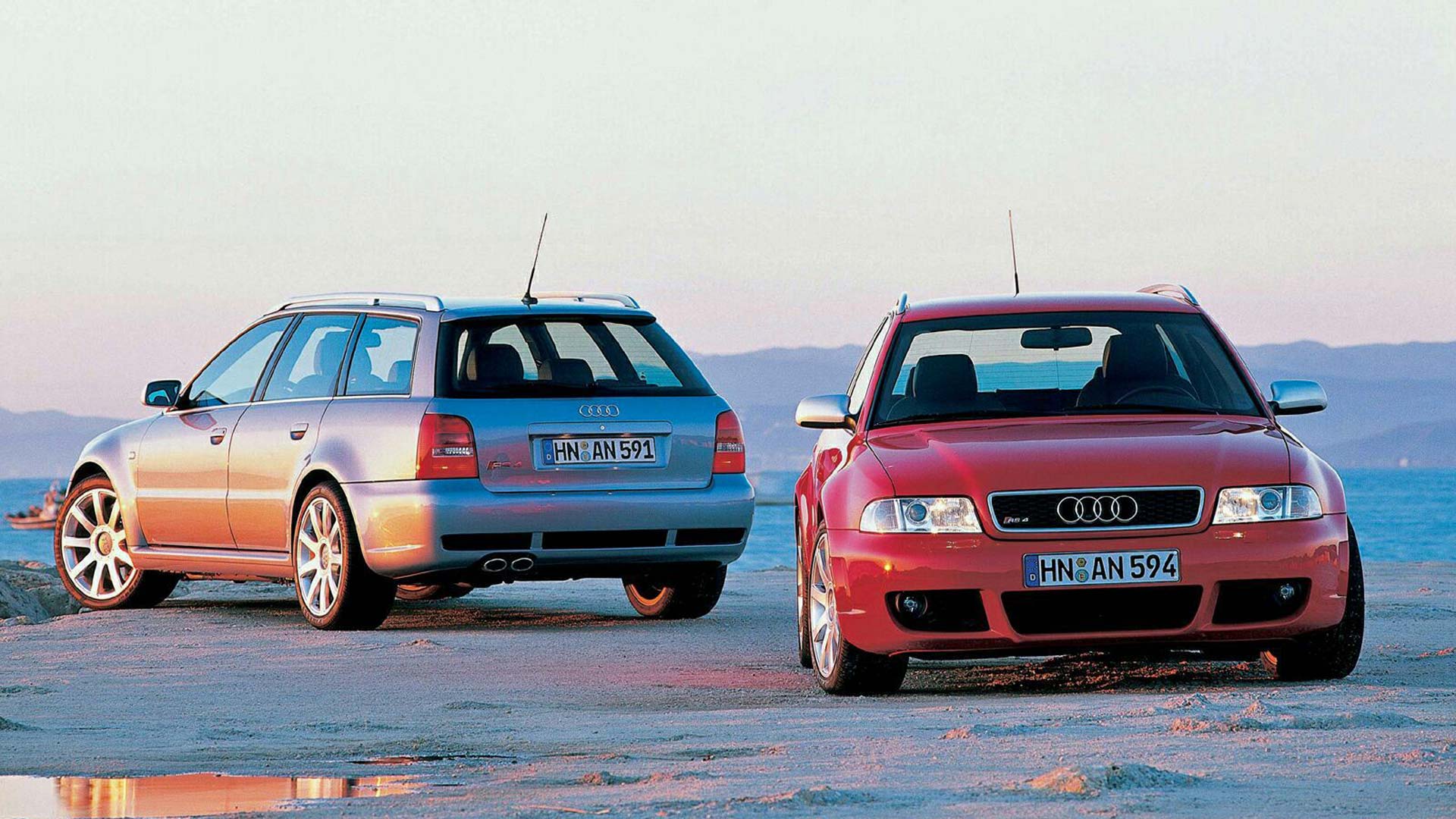
Audi RS4 Avant
© AudiAt the same time as releasing the A2, Audi was also developing its range of performance cars. These included the original RS4 Avant, which was created as a successor to the RS2 of 1994.
There would be no Porsche involvement this time, but Cosworth helped to develop the 2.7-litre twin-turbocharged V6 engine. A total of 381hp and 325lb ft of torque made for a sizable gain over the Audi S4, and could rocket the RS4 to 62mph in just 4.9 seconds.
Audi’s Quattro all-wheel drive system was standard, with a six-speed manual the only transmission on offer. Widened bodywork, upgraded brakes and 18-inch alloy wheels were all standard.
-
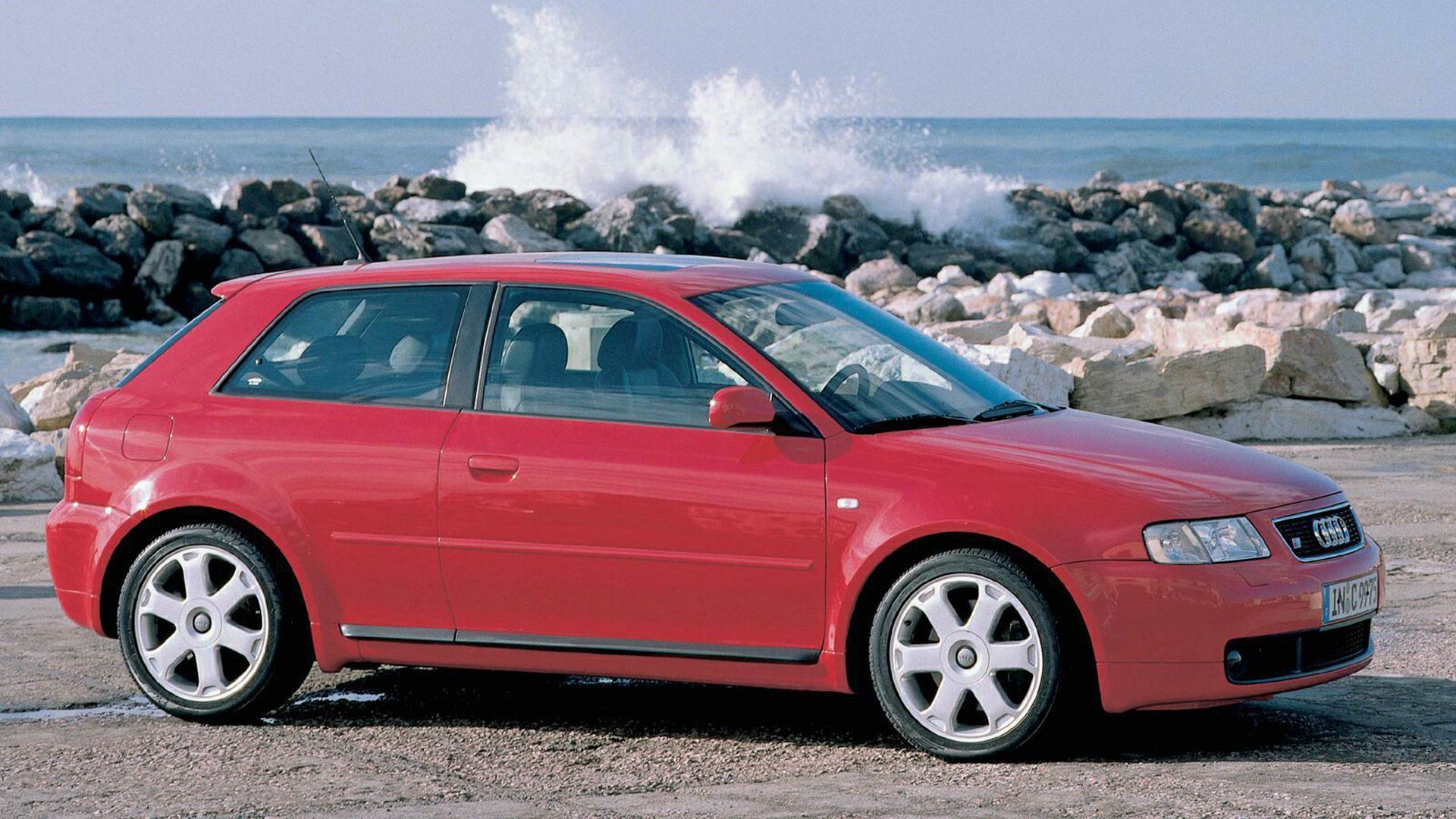
Audi S3
© AudiUpmarket hot hatchbacks with all-wheel drive are now quite commonplace, but the first-generation Audi S3 kickstarted the trend back in 1999.
Early versions of the S3 came with a 210hp version of the turbocharged 1.8-litre 20v engine, as used in the stylish Audi TT. Following a facelift, this would be upped to 225hp, with the standard Quattro drivetrain allowing a 0-62mph time of 6.4 seconds.
The S3’s interior featured leather Recaro seats, climate control air-con and xenon headlights. Buyers could also add a Bose sound system and cruise control.
-

Volkswagen Polo GTI
© VWfirst taste of Polo GTI performance in 1999. European markets had seen a limited-edition GTI previously, but a facelift for the popular supermini coincided with it becoming part of the core model range.
Exterior features included 15-inch BBS two-piece alloy wheels, lowered suspension, a deeper front splitter and front fog lights. Sports seats were fitted inside, with climate control and chrome-trimmed dials included.
A high-revving 1.6-litre four-cylinder engine produced 125hp, combined with a five-speed manual gearbox. This allowed for a 0-62mph time of 8.7 seconds. The same engine was later used in the Lupo GTI.
-

Volkswagen Golf 2.8 V6 4Motion
© VWVolkswagen was happy to fit an endless range of engines to the Mk4 Golf, with the 2.8-litre version of its narrow-angle VR6 the largest option until the R32 arrived. A 4Motion all-wheel-drive system was included for good measure.
Telling the VR6-powered Golf apart from regular models was a task for real enthusiasts, with only a small grille badge and deeper front splitter to give the game away.
The combination of 204hp and 199lb ft of torque could see the V6-powered Golf accelerate from 0-62mph in less than seven seconds. But average fuel economy of 25mpg is a reminder of how efficient modern performance hatchbacks have become.
-

Volkswagen Lupo 3L TDI
© VWFor maximum fuel economy, Volkswagen offered the Lupo 3L TDI to European buyers in 1999. Based upon the already diminutive city car, extensive use of aluminium and magnesium helped the Lupo tip the scales at just 830kg.
A turbocharged three-cylinder 1.2-litre TDI engine mated diesel economy with an automated manual gearbox. Aerodynamic tweaks were also included, such as the redesigned front grille.
A standard stop-start system was also included, while an Eco mode limited the engine to 42hp. All of this created the potential for a remarkable 94mpg.
-

BMW E46 330d
© BMWDiesel may have become a dirty word (thanks, ‘Dieselgate’), but at the turn of the century it started to deliver cars with a brilliant blend of performance and fuel economy. The E46-generation BMW 330d established itself as the office car park champion, thanks to its turbocharged 2.9-litre inline-six engine.
Outputs of 184hp and 288lb ft of torque may seem fairly average today, but in 1999 they enabled the 330d to accelerate from 0-62mph in 7.6 seconds. A top speed of 141mph was countered by the potential to average more than 40mpg.
Factor in the BMW rear-wheel-drive dynamics, along with the potential to tune the engine for even more power, and the 330d really was a potent package.
-
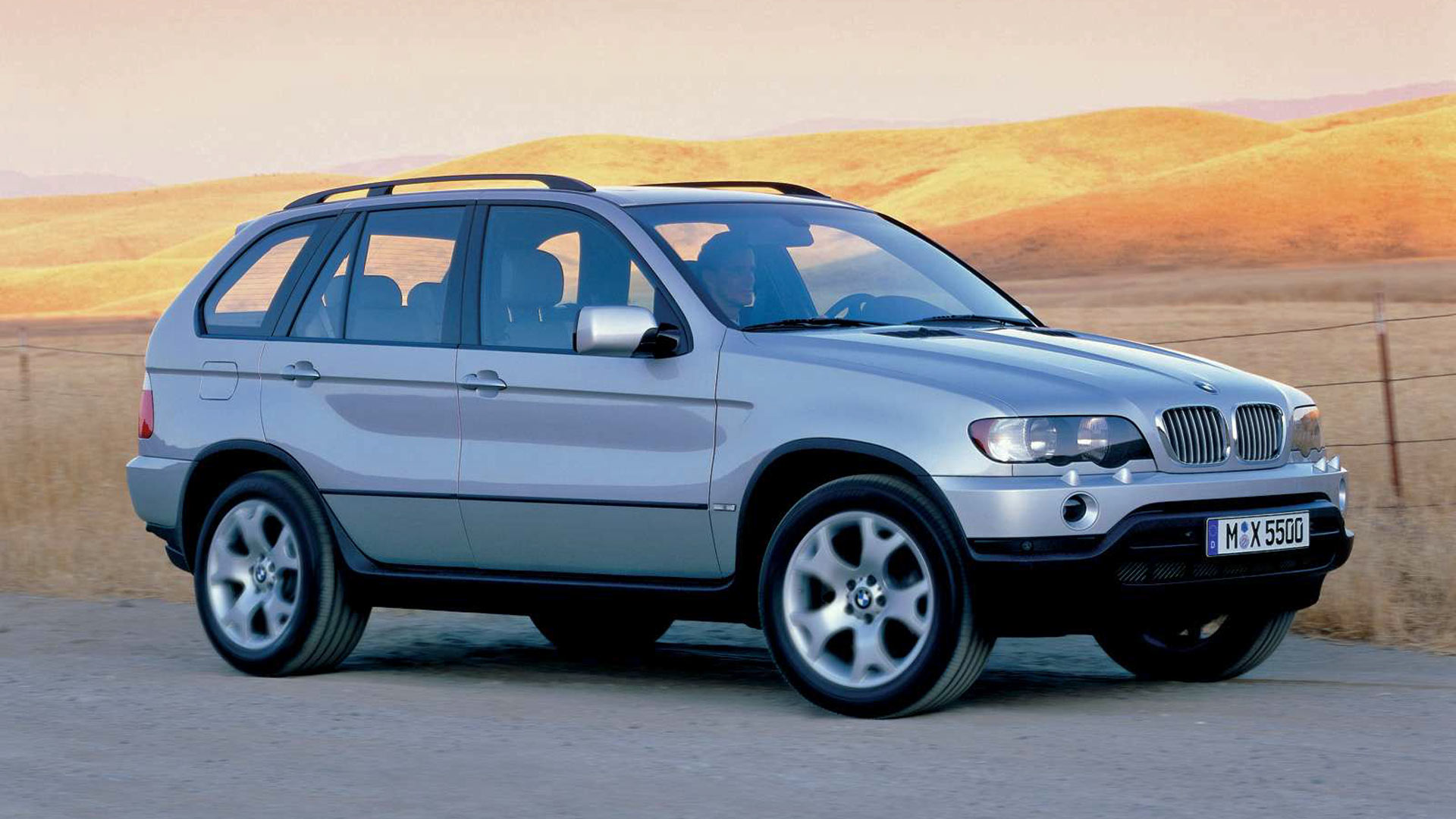
BMW E53 X5
© BMWThe BMW range is now littered with SUVs, or SAVs (Sports Activity Vehicles) as the company prefers to call them. But this is where it all began.
Sharing parts with a Range Rover, back when BMW owned Land Rover, doesn’t sound like a great start. Nonetheless, the X5 became a global success story for the German brand.
Neat handling, a practical interior and a host of powerful engines all helped establish the X5 brand. Some 25 years later, it still looks relatively stylish for an SUV.
-

Subaru Impreza Turbo 2000 RB5
© SubaruA cultural phenomenon throughout the 1990s, the first-generation Subaru Impreza really hit its stride at the end of the decade. The RB5 is arguably one of the best incarnations of the original car, built to celebrate the late Richard Burns returning to the Subaru World Rally Team.
Only 444 examples were made, all finished in Blue Steel paint with a set of 17-inch Speedline alloy wheels. Standard power from the 2.0-litre flat-four engine was 218hp with 214lb ft of torque, but more than one-third of buyers picked the optional WR Sport package.
The latter boosted outputs to 237hp and 258lb ft, resulting in a 0-62mph time of around five seconds. A Prodrive handling package could also be added, making the RB5 almost untouchable on twisty roads.
-
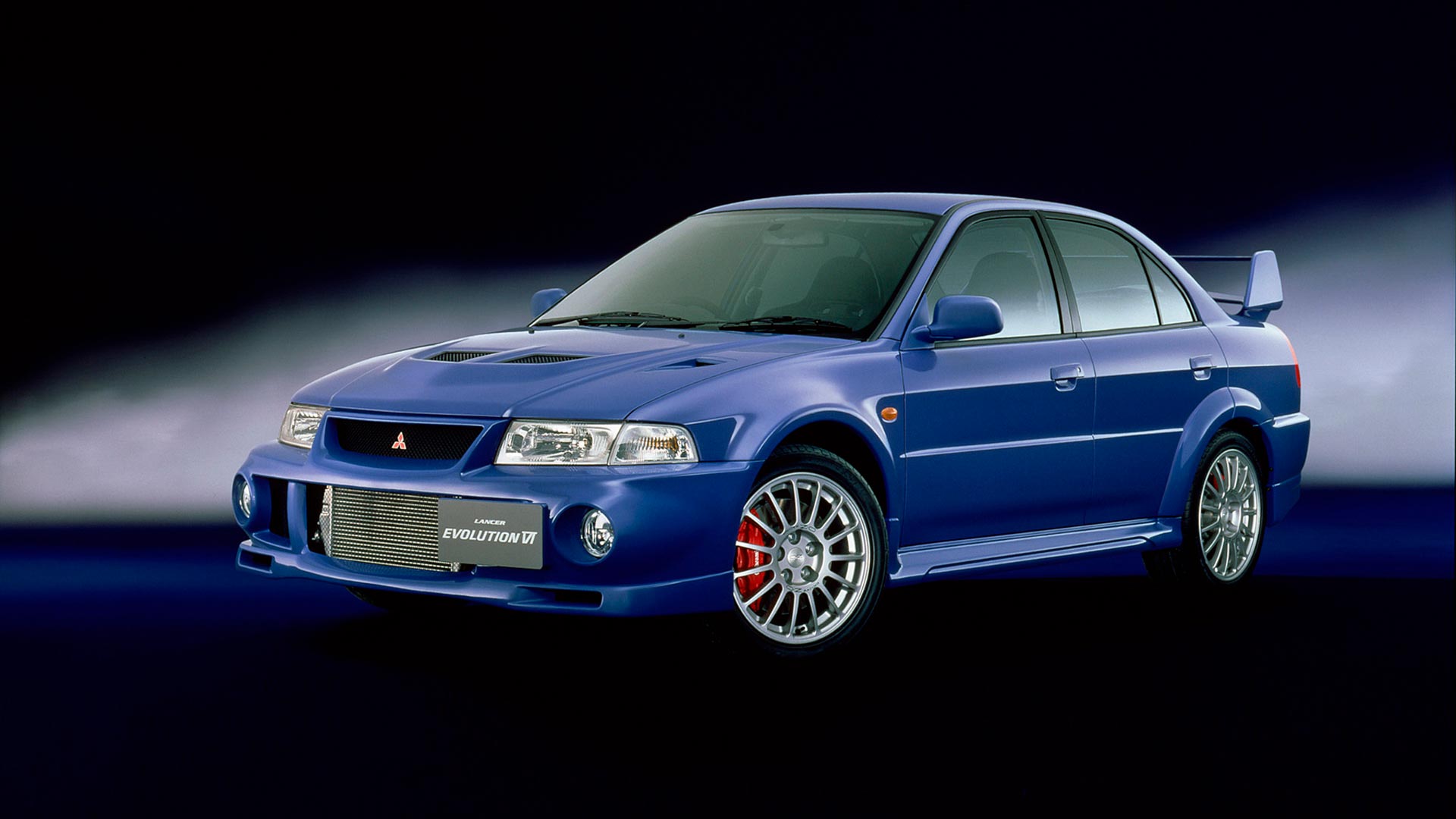
Mitsubishi Lancer Evolution VI
© MitsubishiLike the Impreza Turbo, the Mitsubishi Lancer Evolution had been a major part of car enthusiast culture in the 1990s. Constant updates to keep Mitsubishi’s rally cars competitive peaked in 1999 with the Evolution VI.
The last model developed specifically for Group A rally homologation, the Evo VI wore new bodywork and was the first officially imported to the UK. The turbocharged 2.0-litre engine retained the same 276hp and 275lb ft as the Evo V, but featured a new intercooler and larger oil cooler.
Mitsubishi’s all-wheel-drive system, with Active Yaw Control, helped deliver relentless cross-country pace.
-
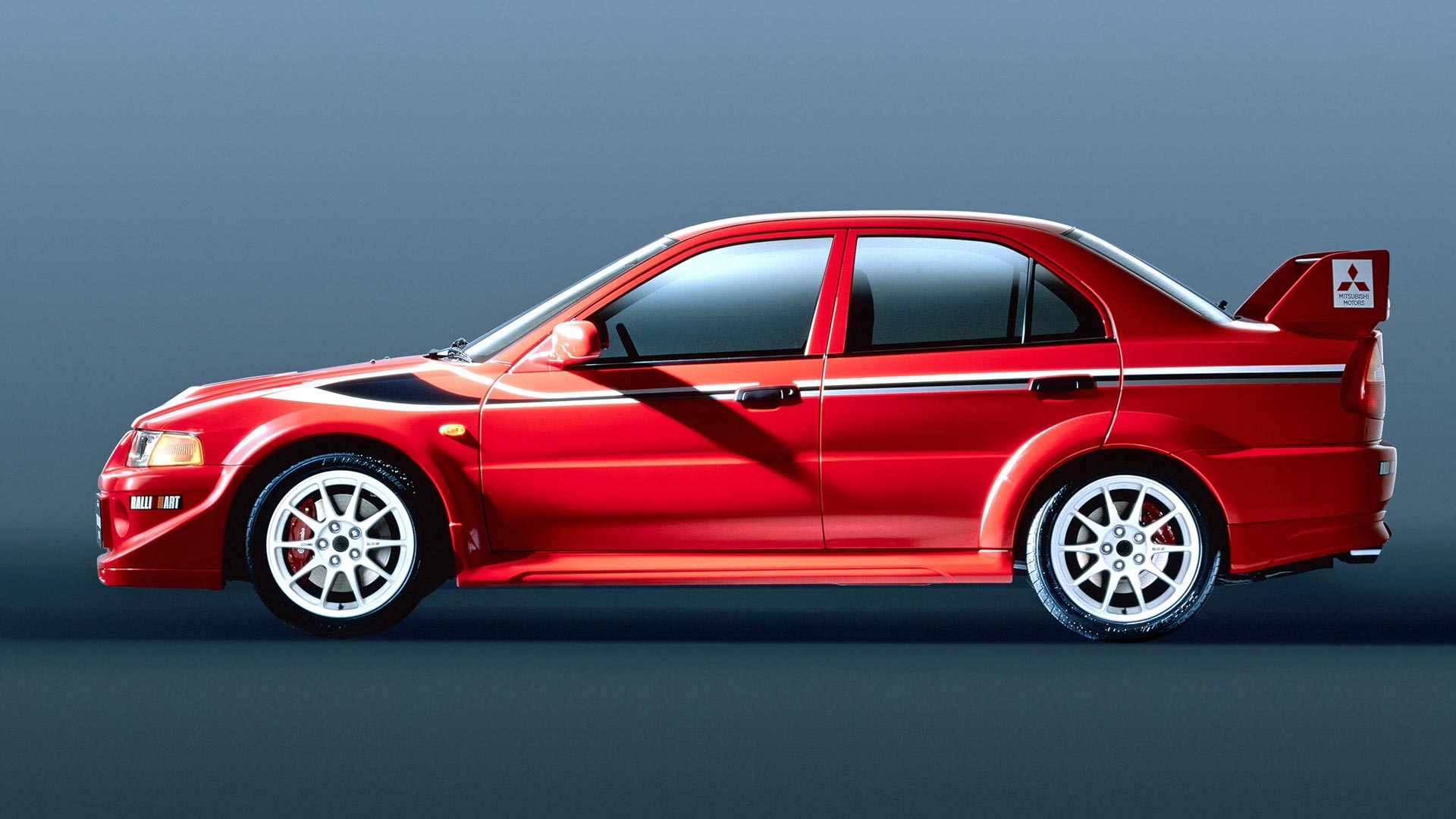
Mitsubishi Lancer Evolution VI TME
© MitsubishiReleased at the end of 1999, the Evo VI Tommi Makinen celebrated the Finnish driver’s fourth World Rally Championship victory.
Key changes included a redesigned front bumper, white 17-inch Enkei wheels, lowered suspension and the option of decals mimicking Tommi’s rally car. On the inside, the Recaro seats each gained a Tommi Makinen logo.
Power from the 2.0 engine remained the same, but a new titanium turbocharger made it quicker to react.
-

Honda S2000
© HondaThe Honda S2000 could have been one of the stars of the late 1990s, but it slightly missed the mark. Honda had produced a number of epic performance models, such as the Integra Type R, but the S2000 lacked the same vigour.
This was despite the use of a naturally aspirated engine with 240hp, sending power to the rear wheels through a six-speed manual gearbox. Just 153lb ft of torque meant the S2000 had to be worked extremely hard, while its electrically assisted power steering lacked feel.
A reputation for twitchy handling did not help the S2000’s cause, although Honda did continue to refine and improve it over time. This means the cars from the end of production are superior to drive than the early 1999-registered examples.
-

TVR Tuscan Speed Six
© TVRFor many, TVR’s golden era came during the 1990s, with a string of successful models such as the Griffith, Chimaera and Cerbera. When launched in 1999, the Tuscan Speed Six aimed to move things forward again, and be a genuine rival to sports cars from Porsche and BMW.
It certainly had the dramatic looks, both inside and out, combined with a powerful 4.0-litre straight-six engine generating 360hp and 310lb ft. There was a top speed of more than 180mph, with 0-60mph taking less than 4.5 seconds.
All of this was done without the interference of traction control or ABS, with a long-travel throttle pedal the only nod to active safety. An appearance in the 2001 John Travolta film Swordfish helped cement the Tuscan’s status.
-
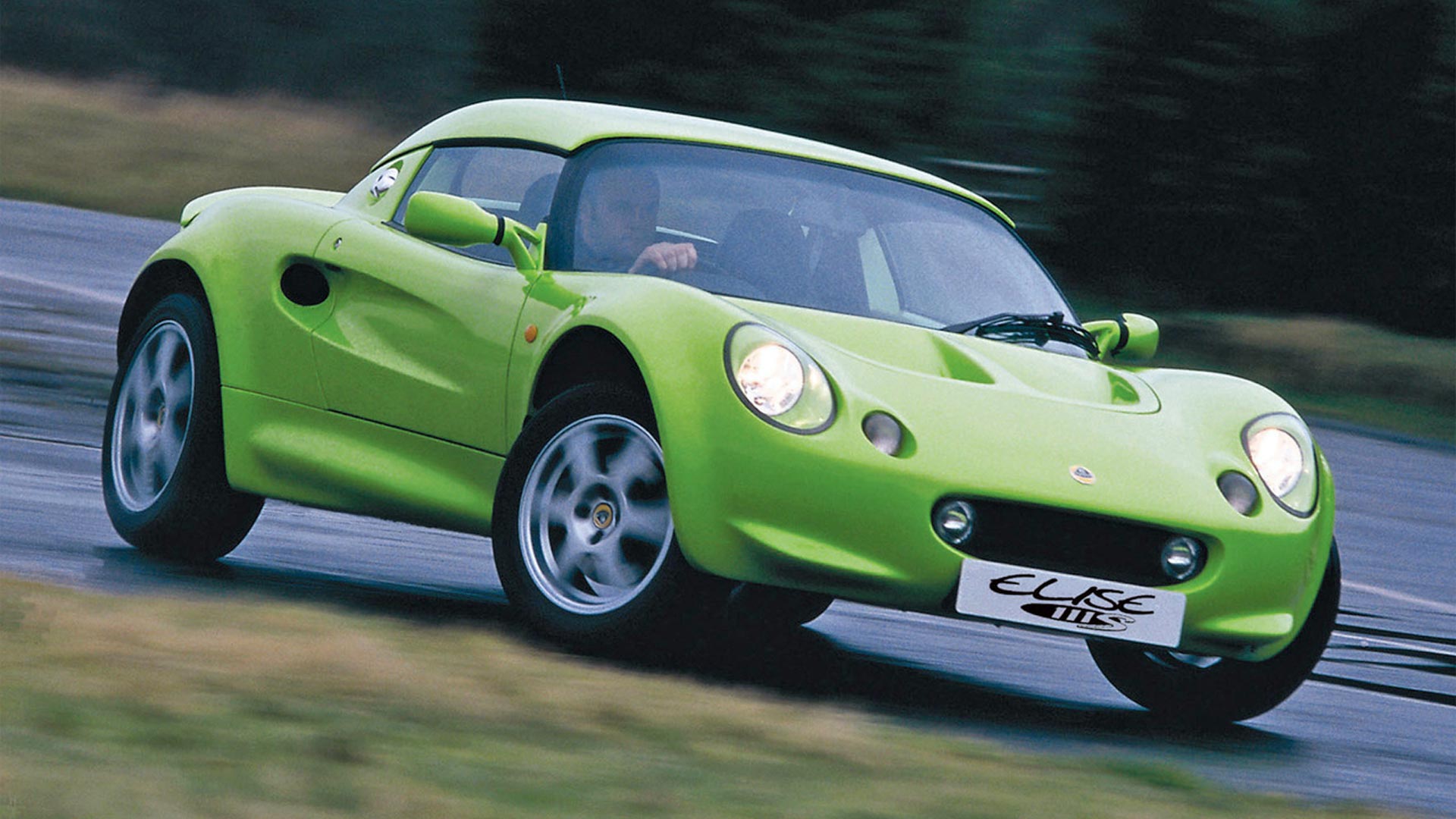
Lotus Elise 111S
© LotusThe first-generation Elise had proved a major hit for Lotus, essentially helping save the company from disaster in the 1990s. After three years of production, Lotus added the more powerful 111S to its range in 1999.
Still using the mid-mounted 1.8-litre Rover K-Series engine, the addition of variable valve timing helped lift output to 143hp. Low-down torque was also increased, while a close-ratio five-speed gearbox enhanced acceleration.
Other changes included the addition of a rear spoiler, cross-drilled brake discs, headlamp covers and new six-spoke alloy wheels.
-

Lotus Esprit Sport 350
© LotusDespite a lengthy production run, it took until 1999 for Lotus to create what is arguably the ultimate version of the Esprit. Just 50 were produced, all wearing a large front splitter and gigantic carbon fibre rear wing.
The twin-turbocharged 3.5-litre V8 remained unchanged, serving up 350hp, but it had 80kg less to shift. This cut the Esprit’s 0-62mph time to less than 4.5 seconds, while AP Racing brakes and tuned suspension made it more effective on the track.
This particular car was previously owned by TV star Richard Hammond. Representing the fifth example of the Sport 350 made, it was sold by Iconic Auctioneers for £65,250 in 2021.
-

Aston Martin DB7 Vantage
© Aston MartinThe Aston Martin DB7 had made its debut in 1995, but it took until the launch of the Vantage in 1999 for this grand tourer to really make its mark. Installing a 5.9-litre V12 beneath the bonnet, producing 420hp and 400lb ft of torque, transformed how the DB7 drove.
Performance was improved, with a 0-62mph time of 5.0 seconds, while top speed increased to 184mph. Styling changes included a redesigned front bumper that flattered the already attractive Ian Callum styling.
Such was the success of the Vantage, demand for the supercharged straight-six version of the DB7 disappeared almost overnight.
-

Aston Martin V8 Vantage Le Mans
© Aston MartinIn 1999, Aston Martin chose to honour the 40th anniversary of its outright Le Mans victory in 1959. This limited-edition also marked the end of the Vantage line, along with the V8 engine that powered it.
A total of 40 examples were made, with a dramatic bodykit that included a distinctive front grille and wing vents inspired by the DBR1 race car. Helpfully, all cars came with a map to help owners find their way from Aston’s Newport Pagnell factory to Le Mans.
Most owners opted to have the V600 package on top, which enhanced the twin-supercharged 5.3-litre V8 to 604hp and 605lb ft. The result was a top speed of 199mph and 0-62mph in just 3.9 seconds.
-

Porsche 911 GT3
© PorscheThe GT3 has become a staple of the Porsche 911 model range, but the 996.1-generation was where it all began. Allowing Porsche to create a racing version for its own GT3 Cup, the GT3-R would also compete and win at Le Mans in 1999.
For the road-going version, a 3.6-litre flat-six offered 360hp, making for a noticeable uplift versus the regular 911 Carrera. Porsche junked the rear seats and most of the sound deadening, and made both air conditioning and a radio no-cost options.
A kerb weight of 1,350kg allowed for a 0-62mph time of 4.8 seconds, with a top speed of 188mph. Buyers could pick between Comfort and Clubsport versions, with the latter gaining a bolt-in roll cage and bucket seats.
-

Ferrari 360 Modena
© FerrariReplacing the legendary Ferrari F355 was always going to be a difficult task. It made constant comparisons with its predecessor impossible to ignore for the 360 Modena, not helped by the fact its styling seemed a world away from the angular F355.
A new mid-mounted 3.6-litre V8 was more powerful, with 400hp and 275lb ft of torque on offer. This allowed for a 0-62mph time of around 4.5 seconds, with a claimed top speed of 183mph.
Ultimately, the 360 Modena was an easier Ferrari to live with than the F355, and several thousand more examples were sold.
-

Lamborghini Diablo GT
© LamborghiniYes, the Lamborghini Diablo initially made its debut in 1990, but a major update under Audi ownership in 1998 resulted in a substantially transformed car. It even saw technology such as ABS become available for the first time.
For 1999, Lamborghini released the limited-production GT model, aimed at track day enthusiasts. Only 80 examples were made, each using a 575hp version of the 6.0-litre V12 engine that was force-fed air via a large roof-mounted intake.
Depending on the gearing chosen, the Diablo GT could reach a top speed of 215mph. This made it the fastest road-going version of Lamborghini’s supercar, with a huge carbon fibre rear wing helping keep the GT pinned to the road.
-

Pagani Zonda C12
© PaganiIt feels like the Pagani Zonda has been in production forever, thanks to a constant string of special editions and one-offs. However, this was the car that started it all back in 1999, following its debut at the Geneva Motor Show.
A mid-mounted 6.0-litre V12 engine from Mercedes-Benz was the star attraction, installed within an exquisite carbon fibre body. With up to 450hp and 435lb ft of torque, it allowed the Italian supercar to reach a top speed of 185mph.
Pagani made only five examples of the C12, hastily moving on to the more powerful C12-S for 2000. One of the first C12 models was destined for crash testing, but it was restored and presented by Pagani at the 2019 Geneva Motor Show.
25 coolest new cars from 25 years ago
These are the vehicles that grabbed headlines in 1999, from hot hatchbacks to wild V12-powered supercars.
Home 25 coolest new cars from 25 years ago
News
Tolman gives classic Mini Cooper S the restomod treatment
With its power output almost doubled, Tolman Engineering has overhauled this Mini Cooper S while preserving its classic character.
You could buy Simon Cowell’s modified Brabus Smart car
Currently up for for online auction with Bonhams, this highly modified Smart city car was specified by pop music mogul Simon Cowell.
Big cat hunting: Classic Jaguars up for auction in December
The Classic Sale at the Warwickshire Events Centre features an array of sporting Jaguar models ready to cross the auction block.
Features
BMW Garmisch: the reborn Gandini concept that predicted the future
Marcello Gandini's 1970 Garmisch concept seemed to be lost forever. Until BMW decided to recreate it in 2019...
The coolest cars of the 1990s
The 1990s was a decade stuffed with desirable modern classic cars, from the Renault Clio Williams to the Dodge Viper.
Acceptable in the 80s: 7 old videos to take you back in time
Youtube clips show what London's roads looked like in the 1980s
Reviews
2004 Audi A2 review: Retro Road Test
Clever packaging, aluminium construction and efficient engines meant the Audi A2 was ahead of its time. Was it too clever for its own good?
2004 BMW M3 CSL review: Retro Road Test
Arguably the greatest BMW M3 of all, the E46 CSL serves up no-holds-barred driving excitement. Here's what you need to know about buying one.
MR archive: Audi RS4 B7 review
We rewind the clock by 11 years for a drive in the new-at-the-time B7 Audi RS4
